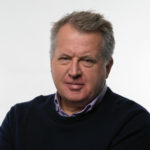A new standard for self-assessment of sustainability in the fisheries sector

A new European standard allows small fishing companies to perform self-assessment of the sustainability of their catches. The standard can help companies in documenting environmental, social and economic sustainability, and give estimates of the emission of CO2 per kg caught fish.
Each company provides its own information such as the tonnage and type of fishing vessel, information about fishing equipment and how the fish is cooled during transport. It is also necessary to specify the quantities of fuel and oil consumed, and how much fish has been caught.
The result is an estimate of the amount of greenhouse gases (measured in CO2 equivalents) that has been emitted per kg of caught fish in a specific period.
Reducing the need for external consultants
“Large companies can pay consultants large sums to document sustainability. This new standard allows small and medium-sized seafood companies to draw up this documentation themselves at a reasonable cost. In this way, they can gain access to the same markets as the large companies. Many purchasers require or prefer to have this information before purchasing fish,” says Nofima Senior Scientist Petter Olsen.
The new standard is the result of the European project “WhiteFish”, which was financed by the EU through the 7th Framework Programme for Research. The project was designed to be of benefit for small and medium-sized enterprises (SMEs) and for SME industry associations.
The drivers behind the project have been the SME associations Fisheries Iceland, Grimsby Fish Merchants Association (UK), KRAV (Sweden) and Norges Råfisklag (Norway) who have all carried out training activities for their members in how to use the standard.
Scientists from Iceland (Matis), Netherlands (WUR), Sweden (SIK) and Norway (Nofima) together with representatives from the industry organisations and several fish industry representatives have spent three years developing the method that forms the basis for documenting the sustainability of fishery products. Nofima has led the project, with Petter Olsen as project coordinator.
Something extra
“Price and quality are not the only factors that purchasers and consumers are concerned about today. All food producers must offer something extra, if they want to obtain a good price for their products. It is not obvious which products are produced in a sustainable manner and which ones are not. Thus producers who can document that their products are sustainable can gain an advantage,” says Olsen.
The shipping company Hermes in Tromsø operates a freezer trawler along the coast of Norway. The company is starting to use the new standard.
“A reputable shipping company must work actively towards becoming more sensitive to the environment. The new standard will improve our overview and control of the level of sustainability, and at the same time give information we can use to become even better” says Operations Manager Jan Roger Lerbukt of Hermes AS. He points out that the standard can be used by any boat, from the very smallest to the largest trawlers.






May lead to lower emissions
Consultants that are commissioned by large companies to document sustainability audit the complete production during a considerable period. It is not possible to give details of the emissions from a particular fishing journey or capture for an individual boat.
This is easier with the new standard.
“Ship owners can use the results to identify the days or trips on which emissions from the fishing boats were greater than normal. They can in this way determine which conditions lead to higher emissions, and may, for example, choose to keep the fishing boat in harbour in certain conditions or to go elsewhere. In the long term, this may lead to lower emissions of greenhouse gases per kilogram caught fish, also because buyers and consumers will give preference to fish with documented low emissions per kg” says Olsen.
Traffic lights
The new standard also enables self-assessment of social sustainability for the companies in question.
A “traffic light” system allows companies to document parameters such as working hours, overtime, salary levels, regularity of salary payments, pension arrangements, the number of accidents and the number of safety drills, and benchmark them against previous performance and industry norms.
Voluntary
The new standard has been given the number CWA 16960. Standards Norway (SN) was the secretariat for the standardisation process and is one distributer of the standard, but it is also available in many other European countries through the national standards organizations.
CWA designates a low-level, European industry standard that is voluntary in nature. The standard is suitable for being supported by software tools, and anyone may write software implementing the functionality inherent in the standard and include it into new or existing applications.
Watch a film
Contact person
Topics
Traceability
Files and Links
